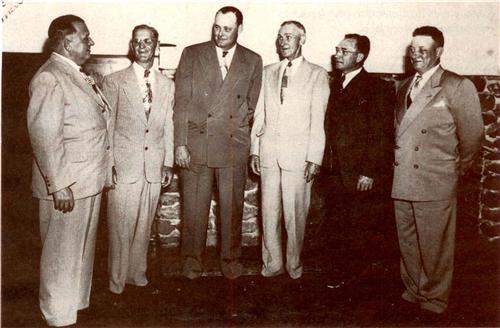 If every black cloud has a silver lining, in the darkness of my uncle’s recent death, the silver lining for me came when his belongings were dispersed among relatives. My cousin and his wife discovered our great-grandmother’s photograph album and reached an immediate consensus: “The family photo expert should get the album!” When I received it, I found out the silver lining was actual, not just metaphorical. From the mirroring of some photographs, I could see that they were indeed silver prints!
If every black cloud has a silver lining, in the darkness of my uncle’s recent death, the silver lining for me came when his belongings were dispersed among relatives. My cousin and his wife discovered our great-grandmother’s photograph album and reached an immediate consensus: “The family photo expert should get the album!” When I received it, I found out the silver lining was actual, not just metaphorical. From the mirroring of some photographs, I could see that they were indeed silver prints!
Needless to say, I was delighted with this gift, a virtual windfall of family visual information. Because this album belonged to Mary Elizabeth Heard, my great-grandmother, it includes many photographs not already in albums created by my mother or grandmother. Among those new to me were adult photographs of both sets of her twin sons. The photograph of Homer and Hunter playing their musical instruments helps with identification because while both played the guitar, only Hunter played the fiddle. Photos of her second set of twins include Marvin and his wife Bertha as newlyweds — were they ever that young? And is that Marvin in a group photo of businessmen? No, from the identification I see it’s Marnice, and that he worked for the International Paper Co. in Camden, Ark.
If you want to be the recipient of family photographic materials someday, you should begin to build a reputation not only as a family historian but also as a family archivist. Encourage family members to see you not only as one who collects family information and builds ancestry charts, but also as one who collects primary source materials, including letters, diaries, Bibles and especially photographs.
Take every opportunity to “market” yourself as a family archivist. While I am an archivist by profession, that didn’t make me the automatic choice to receive my family album. I laid a solid foundation by expressing interest in materials relating to my family that were owned by others. I did this not once, but several times, through e-mail and conversations at family gatherings.
Don’t forget to share what you have. Relatives are more Likely to give materials to you if they know you will readily make them available to other family members. For instance, I sent out copies of a restored image of my great-grandfather to other family members. (See the Photo Detective column in the April 2000 issue of Family Tree Magazine for more on this image.)
Finally, help family members catch the preservation “bug.” When I hosted the launch of the Arkansas History Commission Photographs Web site <www.ark-ives.com/photo>, I made sure my family was on the invitation list. They were able to see firsthand the possibilities of preserving historical materials.
If you’re making your own preservation strides by recording family history information in a software program, collecting photographs or creating elaborate scrapbooks, don’t hide your efforts. Show your family what you can do and my guess is that you, too, will inherit your own silver linings!
From the April 2002 issue of Family Tree Magazine




